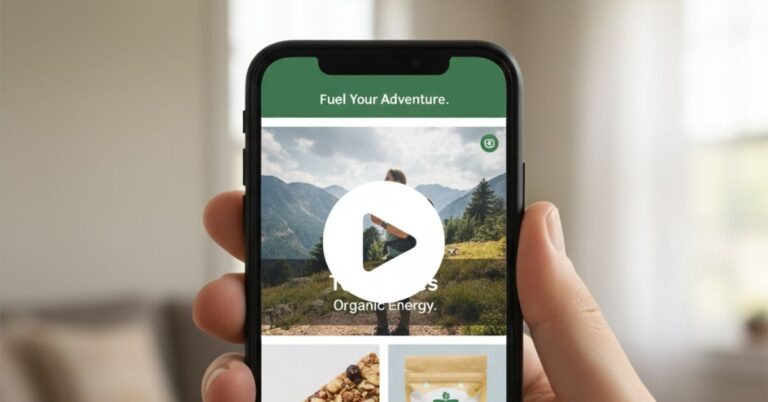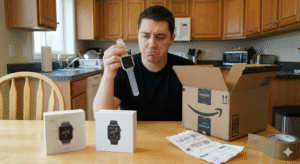
By adopting a Video-First Advertising Strategy, Amazon is signaling a major move toward immersive, motion-driven search experiences that boost visibility and conversion rates.
The battle for page one is no longer just about keywords; it’s about motion. Amazon is signaling a new era by testing Sponsored Brand Videos in the most coveted ad slot – the top of search.
This move confirms what many brands already know: short-form video is a powerful and cost-effective advertising tool. Its flexibility and diversity allow sellers to tell a story and connect with customers in a way static images simply can’t.
This change is the single biggest opportunity for prepared sellers right now.
Amazon Tests Video Ads in Prime Placement
Ankita Kataria, Visual Best"Taglines & static posts aren’t enough anymore, with the digital world being dominated by visually rich content like videos."
A significant change is occurring in the most valuable ad space on Amazon’s search results page. The static Sponsored Brand headline ads that sellers have long competed for are now being replaced by Sponsored Brand Video ads.
Jyoti Prakash Pradhan shared on LinkedIn: Amazon is testing video ads on top of search results. He noted that most searches he now performs begin with these prominent video advertisements.
For example, a search for a common term like “neck pillow” no longer returns a banner ad as the first result. Shoppers are instead greeted with a dynamic video ad that is eye-catching and difficult to ignore.
This move leverages the proven effectiveness of video in capturing shopper interest. The format is powerful for several key reasons:
- Videos immediately grab a shopper’s focus in a crowded search results page.
- They can quickly highlight a customer’s pain point, present the product as the solution, and build perceived value, which helps drive conversions.
- The majority of sellers have not yet adopted Amazon video ads because creating quality content requires a greater effort than static images.
This low adoption rate presents a major opportunity for sellers who are ready to act. By developing a video strategy now, brands can secure top placements while competition remains low.
Lessons from Meta: Why Video Creative Is the New Targeting
Video advertising has become the dominant force in e-commerce marketing, according to Deborah Engelmajer,founder of Tizzit and a seasoned business consultant. She recently revealed why most online sellers waste money using outdated strategies—and how to fix them.
These modern principles, while focused on Meta platforms, offer a clear blueprint for why a video-first approach is essential everywhere, including Amazon. The guidance shows that success, especially with smaller budgets, now depends on a completely different mindset than what worked just a few years ago.
Outdated Strategies to Abandon
Sellers should no longer use complex, multi-stage campaign funnels that spread a small budget too thin across awareness, traffic, and conversion goals. Similarly, the practice of manually testing dozens of interest groups and demographics is now inefficient.
These methods are obsolete because advertising platform AI has become incredibly powerful. An algorithm like Meta’s can now process massive amounts of user data to find buyers more effectively than any manual selection, allowing sellers to run direct sales or lead generation campaigns from day one.
A Modern Approach to Prioritize Creatives
The new model of advertising requires sellers to spend 80% to 90% of their time and energy on their video creative. The actual content of the video has become more important than campaign structure and audience targeting combined.
Platform AIs analyze every part of a video, from the visuals to the transcribed words, to understand the message and find the right audience. This is why two different videos with identical targeting can produce wildly different results, with one hitting a 5x return while another fails.
A Framework for Effective Video Testing
To succeed, sellers must test variations of their video ads systematically. Effective testing involves modifying three key elements:
- Type –This refers to the video style, such as a standard ad, a vertical Reels-style video, or a video carousel.
- Angle – This is the specific benefit or feature highlighted, such as a lipstick’s long-lasting formula versus its moisturizing ingredients.
- Format –This describes how the angle is presented to the customer.
There are several proven video formats that consistently perform well. Sellers should test a variety of them to see what connects with their audience, and many brands work with an Amazon agency to produce this diverse content at scale.
- Testimonial Videos – Feature real customers sharing their positive experiences.
- Founder Story Videos – Allow the business owner to explain the “why” behind the product.
- Comparison Videos – Show the product performing better than its competitors.
- Feature Callout Videos – Use on-screen text and graphics to highlight key attributes.
- User-Generated Content (UGC) Style – Mimic the authentic feel of organic social media posts, which builds trust.
The New Workflow for 2025
The most successful advertisers now create new video content every single week to avoid audience fatigue. They load six to 10 video variations into a single campaign and allow the platform’s AI to automatically shift the budget to the top performers.
This means sellers must shift their focus away from obsessing over campaign settings, which should only take a few minutes to set up. The bottom line is that success in 2025 is determined by the quality of the video creative, not the complexity of the technical setup.
Amazon Signals a Move to Immersive Shopping Experiences
The shift to video ads is part of a larger trend on the platform, as Ivan Marynych included in his newsletter. Amazon is clearly indicating the direction in which the platform is heading: motion-based, immersive shopping experiences.
This strategic direction means visibility on the first page of search results is quickly becoming a video-first battlefield. Sellers who have not yet started using video ads are encouraged to do so now to maintain a competitive edge.
Further evidence of this move toward an immersive shopping experience comes from another test Marynych shared. Amazon is experimenting with a new feed-style vertical scrolling for product images on mobile devices.
This potential update would fundamentally change how shoppers interact with product visuals. The user experience would shift in a significant way:
- Current Method: Shoppers swipe left or right through a horizontal stack of product images.
- Tested Method: Shoppers scroll vertically through images in a continuous feed, similar to social media.
This design change could transform static product images into a seamless storytelling experience. Sellers could arrange their visuals to create a cohesive “one-pager” effect, guiding the customer through an engaging product walkthrough.
If this update is fully rolled out, it would elevate the standards for creative strategy. The order, flow, and visual cohesion of product images would become even more essential for driving conversions.
Lenovo"Infinite scrolling offers a few benefits. Firstly, it provides a continuous flow of content, keeping users engaged and reducing the need for manual interactions."






